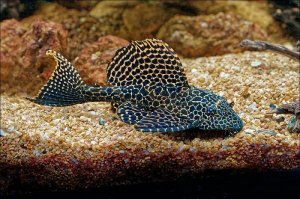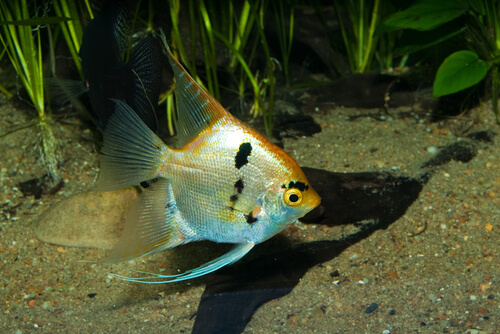
Angelfish are marvelous creatures with a unique look you can’t resist. Although they are trendy, many angelfish owners have had to deal with some unusual situations. While caring for them, you may encounter specific problems that make life more challenging. In particular, finding that your pet may be dying and trying to understand angelfish behavior before death.
If you’re beginning to see some concerning signs, we’ve compiled a few tips on what to look out for in your angelfish. With awareness of these situations, you should have an easier time spotting dangerous signs before it’s too late.
Unfortunately, angelfish are very delicate creatures that can die suddenly. If a sudden angelfish death occurs in your tank, you should do your best to prevent the same for others. Some common causes of angelfish death are included in this article, so identify the ones that mirror the situation in your tank.
Typical Angelfish Behavior Before Death
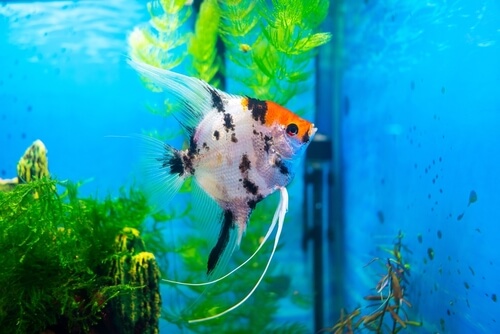
1. Constantly Hiding

Sometimes, angelfish can display signs of stress before death, especially when they begin to hide excessively. It is pretty normal for an angelfish to act this way when it is new in the tank, but it gets more concerning if it is constantly hiding, failing even to show its face for multiple days. When your angelfish displays this sign, there is a possibility it could be sick or injured and needing immediate treatment.
2. Lack Of Appetite
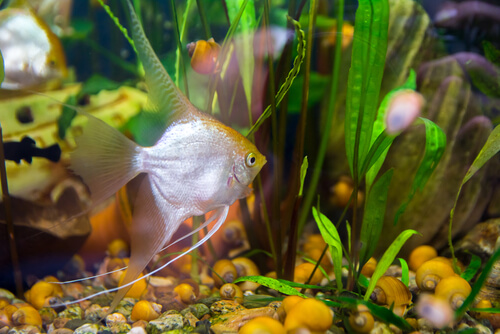
Angelfish are aquarium pets with large appetites. They tend to be ready for a meal, even when they’ve received a fair share of food for the day. So if an angelfish is absolutely refusing to eat any food, you should be concerned. However, your fish not eating one meal shouldn’t be too much of an issue. But if there is a total loss of appetite, this is an indication of a more significant issue. This could imply problems with the environmental conditions of a tank, bullying, or illness.
3. Glass Surfing

Glass surfing is when your aquatic friend swims up and down along the tank walls frequently. If your fish is displaying this behavior, it could be struggling with being overcrowded or reacting to uncomfortable tank temperatures. Glass surfing is one of the more apparent angelfish behavior before death and should not be taken lightly.
4. Change In Appearance
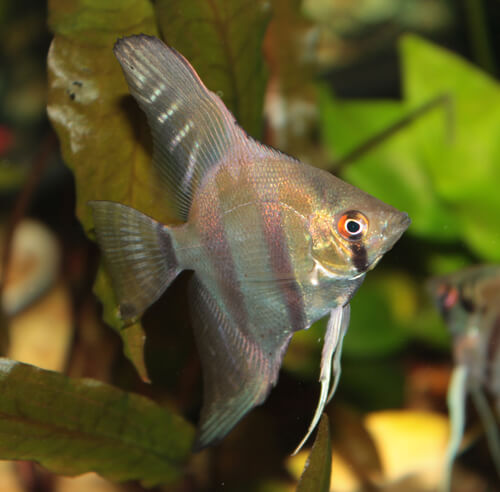
When angelfish are stressed, it may not be a pretty sight. Stress can manifest into physical signs such as losing color, bruises, open wounds, ashy fins, and flakiness in its scales. These are all pointers that your angelfish could be facing a threat to its well-being. In addition, such symptoms can be linked to poor diet, illness, poor water conditions, and other injuries.
Angelfish dealing with bullying from other fish can also display these symptoms. If this is the case, you will likely see missing scales, bitten fins, and wounds on their bodies. Try to address this immediately, as this could be one of the causes of angelfish death.
5. Fin Rot
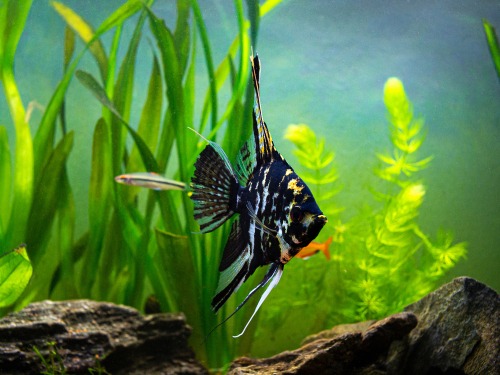
Fin rot is a bacterial infection in your fish that causes the fins the decay. This condition is alarming if untreated and could lead to your pet’s death. When fin rot is present, you will notice raw patches on the fin, which can look frayed. This condition is usually linked to poor water conditions in the tank, leading to sudden angelfish death.
Causes Of Angelfish Death

Most aquarium enthusiasts can attest to the unfortunate nature of the hobby. Sometimes, fish die. But if something can be done to prevent its frequency, you should do what you can. More so when angelfish keep dying within a short period. Below we’ve focused on a few factors that could be impacting your aquatic friend’s survival.
1. Your Angelfish Is Sick

Sometimes, you can have a dying angelfish on your hands without realizing it. This usually happens when you buy an angelfish without closely inspecting its health and condition. If you’re ever buying one, you should look for signs of sickness. Angelfish behavior before death is usually quite obvious when your pet is sick. Therefore, keep these symptoms in mind.
Physical signs include fraying fins with tears and holes, rotten body patches, missing patches of skin, bloating, white specks appearing around its body, sores, and fading colors. With enough attention, you should be able to resolve these problems before they become irreversibly damaging.
When buying an angelfish at a store, you notice that the water inside is quite dirty, don’t overlook it. A poorly kept store tank is a sure sign that the fish inside is unhealthy or exposed to harmful bacteria.
At a fish store, watch out for signs of lethargy in these aquatic pets. With sluggishness being a pre-emptive sign of sudden angelfish death, you should be careful with your selection.
A sick fish introduced to your home tank can expose other fish to its disease. Even the “safe” plants and other tank embellishments can contribute to the problem without regular cleaning and decontamination.
2. Poorly Maintained Tank

Keeping fish comes with its own fair share of responsibilities. As a pet owner, you must consistently clean your tank, ensuring your angelfish are kept healthy. Still, excessive cleaning can introduce its own problems for the ecosystem. If you want to clean your tank correctly, you have to understand the needs of your fish.
Unfortunately, angelfish behavior before death caused by poorly maintained tanks can sometimes be more subtle than you can imagine. However, if you want to avoid a sudden shock, you have to be cautious of drastic changes to your tank. Often you will find the sudden stress can be felt by your entire angelfish population. In such situations, you should try to change the conditions and prevent sudden angelfish death in your tank.
Excessive and thorough cleaning can lead to the loss of good bacteria within a tank, especially when you’ve removed biological filters like tank plants. A well filtered tank is able to reduce the levels of ammonia by turning it into nitrites. Ensure that you have just the right balance of cleaning frequency and that it does not disrupt the pH levels of your water.
3. Overfeeding
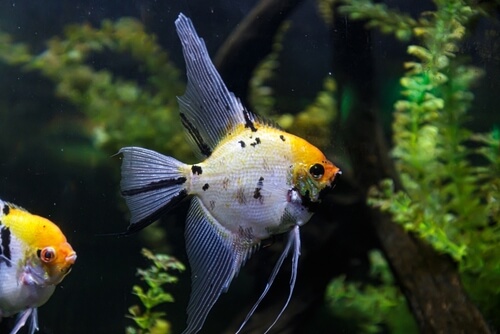
Even if you’re overfeeding a fish, you will find that it will keep eating. Unfortunately, angelfish lack control and will eat even when they don’t need it. That’s why it’s vital for you to stick to the recommended limit to avoid them overindulging. Overfeeding is among the top causes of angelfish death, inducing problems like swim bladder disease, bloating, and constipation.
4. Overstocking
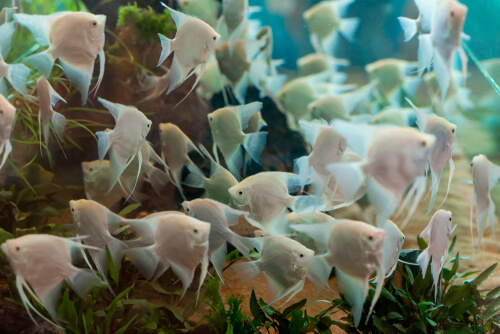
Another problem that can affect the behavior of your fish is overstocking. When your angelfish tank is overstocked, your fish can become ill. When you have a number of fish in a small space, your tank will likely accumulate toxins faster, which can lead to stressed-out fish. Stressed fish become lethargic, leading to other angelfish behavior before death.
5. Poor Water Parameters
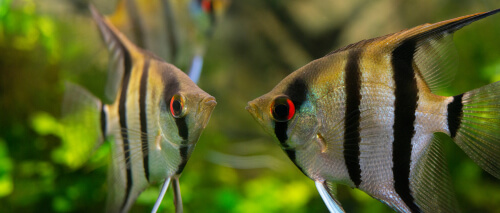
An angelfish can only do so much to help itself when placed in a bad environment. Even if the water is clear and there are no apparent dangers, other aspects, such as the pH levels, could be off balance. Therefore, you should stick to the proper water parameters and ensure that your fish can thrive.
If your angelfish is kept in a tank with the wrong temperatures and pH level, you could be contributing to one of the causes of angelfish death. Your angelfish behavior before death might not appear abnormal right away, but if your fish remains in these conditions, it can result in its demise.
6. Malfunctioning Tank

Sometimes the tools you use to sustain your tank can be problematic. For example, a tank heater might suddenly begin to misbehave, failing to maintain warm temps and causing your fish to get excessively hot or too cold. Another example is when your tank’s filter stops working. As a result, your water can be quickly affected by pollutants. When the hardware of your aquarium malfunctions, your fish’s environment is compromised, and you put your fish in danger, possibly leading to death. Be sure to keep an eye out for something like this.
7. Poor Acclimation
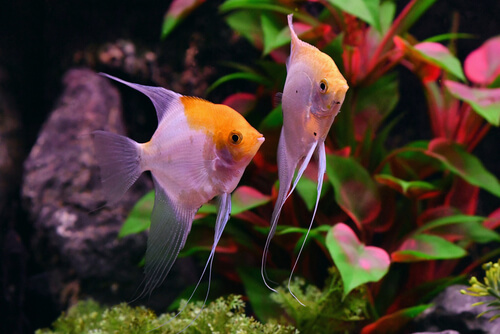
Fish require some time to adapt to a new environment, especially angelfish. If you haven’t applied enough caution before adding them to your tank, the new angelfish might be in for some discomfort. Acclimation begins with proper water parameters and ensuring that the aquarium has friendly tank mates. Your angelfish can become stressed if the environment is hostile, which can lead to illness.
How To Prevent Your Angelfish From Suddenly Dying

If your angelfish keep dying, you need to reconsider the care and methods you use. These are two simple ways to reduce the chances of your angelfish suddenly dying.
1. Adapt Your Angelfish In The Right Way
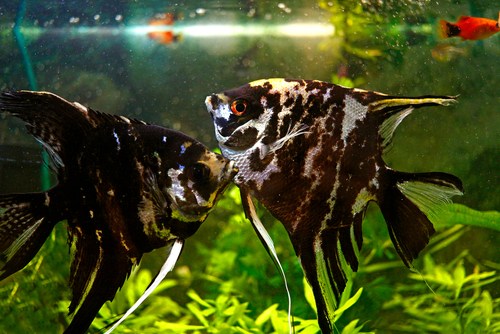
Before adding them to your main tank, you should acclimate your angelfish the right way. First, float the fish in the water while still in the pet store bag. Doing this will give the fish a chance to adjust to the temperature. Next, you can slowly add small amounts of tank water to the bag, familiarizing it with the pH levels and other parameters. This is an effective way to introduce your angelfish to a new environment.
2. Quarantine Sick Angelfish

When your angelfish is sick, it is best to quarantine it. This is the best way to keep the infection from spreading to other fish. A lot of fish ailments are subtle and quick to spread. If detected early, you can act swiftly to prevent anything serious from happening. Some aspects of angelfish behavior before death can be subtle, so you may not see the behavior change immediately.
While your fish is in quarantine, be sure to pay attention to it and continue adding treatments regularly. In addition, check its behavior and appearance for signs of worsening conditions. Look out for signs of sluggish behavior, color fading, hiding, or refusing to eat. If your fish still displays these behaviors, they should be kept in quarantine until they recover.
It’s always essential to do regular water changes while your fish is in quarantine. Dirty water won’t help your fish one bit. Raise or drop water temperatures based on suggestions for the disease it may be fighting. Remember to consult with an experienced veterinarian before any treatment. With their help, you can ensure that your fish receives the proper medication it requires for survival.
Creating The Right Environment For Angelfish
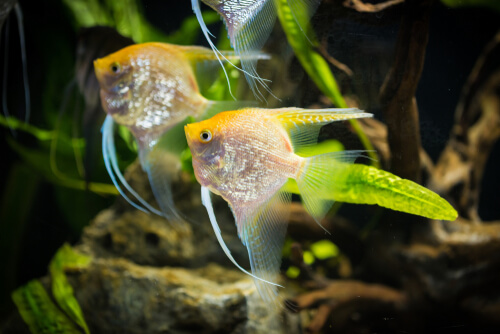
If you want to avoid seeing angelfish behavior before death, then it’s time to change your tank’s conditions.
1. Adjust Parameters
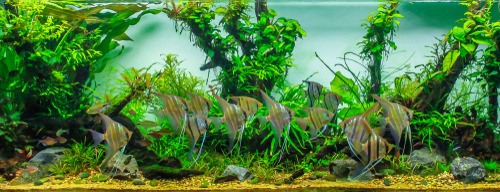
First, you will need to pay attention to tank parameters. This means that you should maintain temperatures between 78 to 84 degrees Fahrenheit. In addition, you should try and maintain a pH balance that sits between 6.8 and 7.8. Do your best to avoid constantly changing pH levels, mainly because the constant changes can be one the causes of angelfish death.
2. Use The Correct Equipment
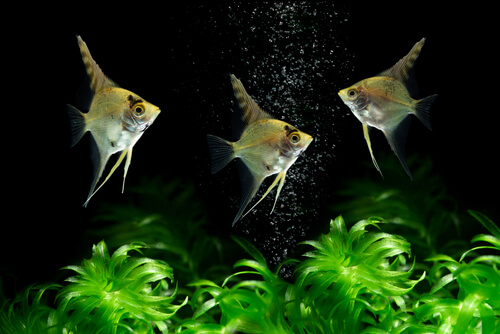
To keep your tank ideal, you will need a few pieces of equipment to assist you. Firstly, ensure you have a working heater to keep the water at the required temperature. Temperature fluctuation can cause shock in your fish which increases its stress levels. Secondly, a thermometer is needed to identify when the water is not at the correct temperature. And lastly, a good water filter to remove toxins in the water and improve oxygen levels.
Conclusion
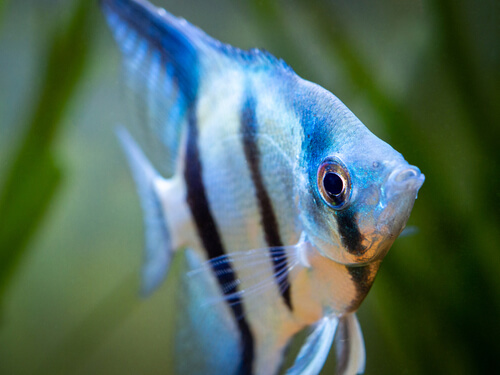
If your angelfish is suffering and showing signs of struggle, there are some things you can do to help it out. The guides provided in this article should be helpful in getting your angelfish to the perfect health it deserves.


